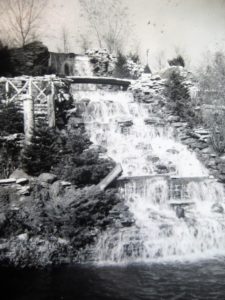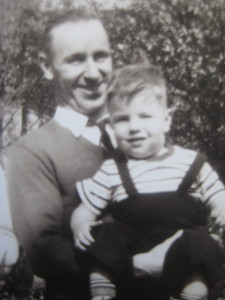When I was 13 years old, in 1958, I worked the summer with my Uncle George on his home delivery truck for Bowman Dairy. This was back in the days when you could have home delivery for many things, until safety became a real issue.
Uncle George would pick me up around 5 in the morning and we would ride over to the dairy distribution point where he would load the crates of milk while I chopped ice to place on top of the bottles.
Milk (including chocolate), cream and orange juice were checked off my uncle’s list as he placed them in the truck, followed by me chipping the ice off larger blocks to fit in the crates. We also placed a few larger blocks of ice on the side ledge in the truck to chip off more as the smaller chips melted. The interior of the truck was insulated and it was cool inside while we drove around in the summer heat. This was before air-conditioning was perfected and available for cars and trucks.
By 6am we were on the street and deliveries began. I dont remember in what neighborhoods we delivered because most of the stops were in the alleyways up the rear porches of the apartment buildings. We would get the person’s order off a list my uncle had, load a wire basket and haul the order up the stairs. I placed the items either to the side of the door or between the screen door area. Sometimes there would be a note requesting an extra quart of something for next time. I would ring the bell or knock on the door and then scamper down the stairs.
Deliveries were made 3 times a week so folks usually ordered quarts of milk unless they had a lot of kids, then it was half gallon bottles. If Uncle George saw someone sitting on the porch or out in the yard while he was delivering, he would go over and talk to them about the benefits of home delivery, explaining it was only a few cents more for the convenience. This was before all the Quickie and gas station marts.
There were a few local neighborhood mom and pop stores that were on the list and we would deliver six or eight ½ gallons, and ½ pints of chocolate milk. We usually got our donuts while in the store. George had a thermos of coffee and he let me have a ½ pint of chocolate milk.
The following year, my cousin, who was a year younger than I, replaced me on his father’s route. It was only fair, but I missed the early morning rise and grown up feeling I experienced riding with my uncle and the talks we shared during my summer vacation in his ice-cooled truck.
I wanted to help Uncle George increase his business, so I came up with the idea of colored milk. After all, cows eat grass so why not green milk? Chocolate milk was brown so why not red or yellow too? So one afternoon I got some food dye and created green milk. I thought it was cool until I showed it to mom.
She became a bit upset and when my dad came home he informed me I would be drinking the entire half gallon before anything else. When my uncle heard of it, he laughed and stated that maybe they should make colored banana or strawberry milk. He should have acted on that thought! A few years later, uncle George switched jobs and began delivering ice cream. I liked the idea of him stopping by the house weekly and dropping off ice cream bars.
One evening, Uncle George revealed why he chose milk and ice cream delivery. He had been taking courses in refrigeration maintenance and repair and now, after several years, he was going into business for himself servicing the equipment he had become familiar with.
I admired my uncle George and had the opportunity to tell him so before he died. He was a people person. A bit rough on the edges but always with a joke or story to tell. He treated people, including us kids, with respect and never talked down to us. I told him that riding in the truck with him that one summer and getting to know him better, was one of the best experience I had as a kid.
Although Uncle George always worked in the cold, it was his personal warmth that brought him success and made him my favorite uncle.

